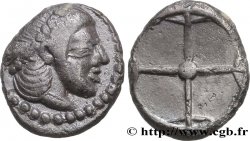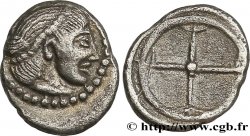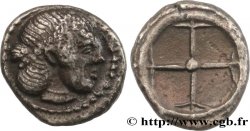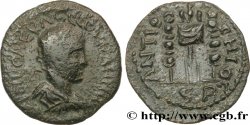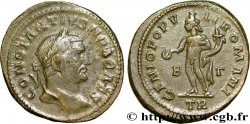v36_0049 - SICILIA - SIRACUSA Tétradrachme
MONNAIES 36 (2008)
Начальная цена : 480.00 €
Назначить цену : 750.00 €
Цена реализации : 550.00 €
Количество ставок : 5
Максимальная предлагаемая цена : 560.00 €
Начальная цена : 480.00 €
Назначить цену : 750.00 €
Цена реализации : 550.00 €
Количество ставок : 5
Максимальная предлагаемая цена : 560.00 €
Тип Tétradrachme
Дата: c. 480-475 AC.
Монетный двор / Город: Syracusa
Металл: silver
Диаметр: 24,5 mm
Ориентация осей монеты: 10 h.
Вес: 17,44 g.
Редкость: R3
Emission: groupe 3, série 8b
Комментарии о состоянии
Exemplaire sur un flan épais, un peu court, mais néanmoins bien centré avec un très beau portrait de style archaïque. Droit de haut relief avec tous les détails de la Niké bien visibles au niveau de l’aile. Recouvert d’une très belle patine gris foncé de collection ancienne
Ссылки в каталоге: :
Лицевая сторона
Аверс: легенда: ANÉPIGRAPHE.
Аверс: описание: Bige au pas à droite, conduit par un aurige tenant les rênes et le kentron ; le bige est couronné par Niké volant à droite.
Обратная сторона
Реверс: Описание: Tête d'Aréthuse à droite, les cheveux relevés et retenus par un diadème de perles, entourée de quatre dauphins.
Реверс: легенда: SURAKOS-ION
Реверс: перевод: (De Syracuse).
Комментарий
Mêmes coins que les exemplaires du trésor de Randazzo (NS. 18, p. 66, n° 322-323, pl. 13, Boehringer 152).
Same coins as the examples of the Randazzo treasure (NS. 18, p. 66, no. 322-323, pl. 13, Boehringer 152)
Same coins as the examples of the Randazzo treasure (NS. 18, p. 66, no. 322-323, pl. 13, Boehringer 152)








 Cообщить об ошибке
Cообщить об ошибке Распечатать страницу
Распечатать страницу Отправить мой выбор
Отправить мой выбор Задать вопрос
Задать вопрос Consign / sell
Consign / sell
 Информация
Информация